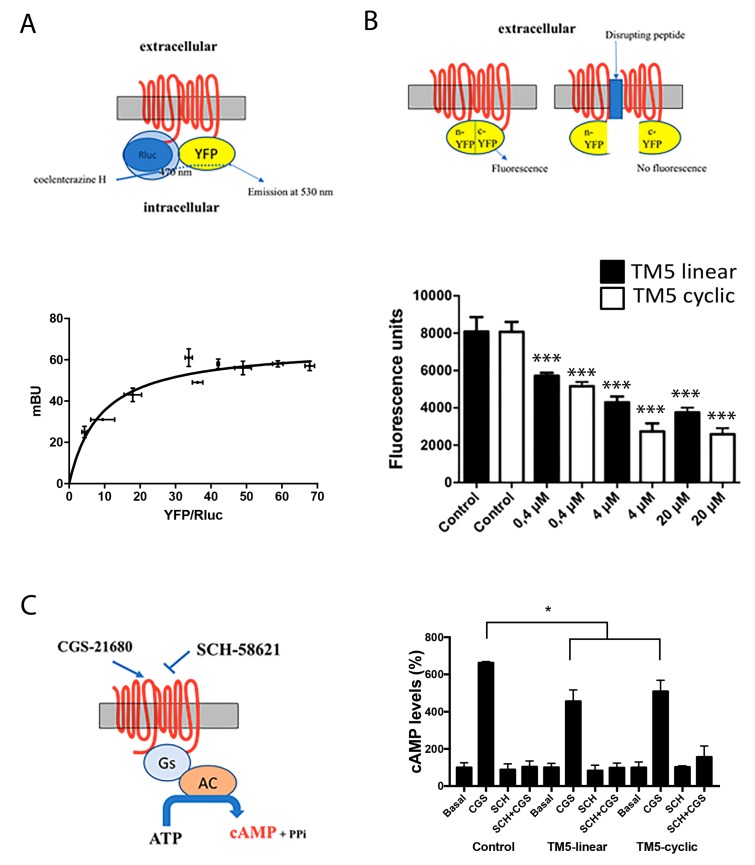Figure 2.
Bioluminescence resonance energy transfer (BRET) assays for homodimer receptor identification and bimolecular fluorescence complementation and signaling in cells expressing A2A receptors in the presence of linear and cyclic Tat-like (disrupting) peptides 1 (linear TM5-Tat) and 2 (TM5-cyclic Tat-like). A scheme of BRET (A), molecular complementation (B) and cAMP determination (C) assays is shown close to each graph; AC = adenylyl cyclase. Panel A: data are mean +/− standard deviation (SD, n = 6 in duplicates). The blue arrow in the upper illustration denotes that, only if dimerization occurs, energy transfer from RLuc to coelenterazine H takes place, causing YFP excitation hence fluorescence emission. Panel B: data are mean +/− SD (n = 12 in duplicates); *** p < 0.001 respect to each control (analysis of variance (ANOVA) followed by Bonferroni’s post-hoc tests). Panel C: data are the mean (in % of increase over basal) +/- SD (n = 8 in duplicates). * p < 0.05 with respect to absence of peptides and no significant differences in linear versus cyclic by two-factor ANOVA analysis.

